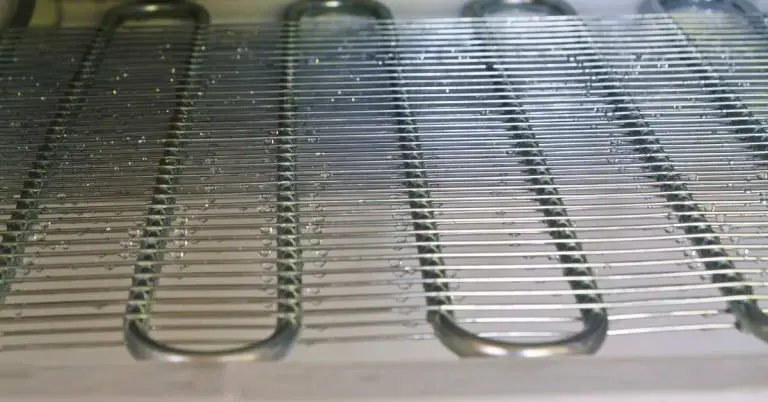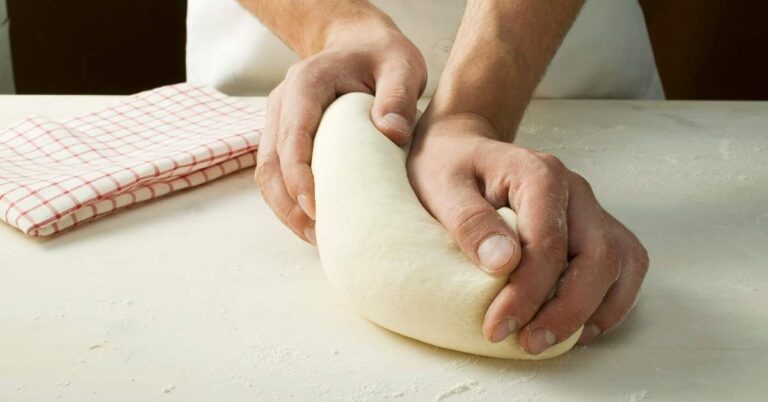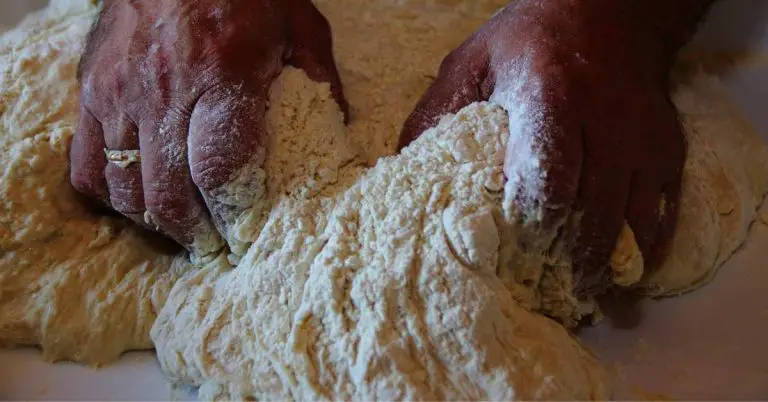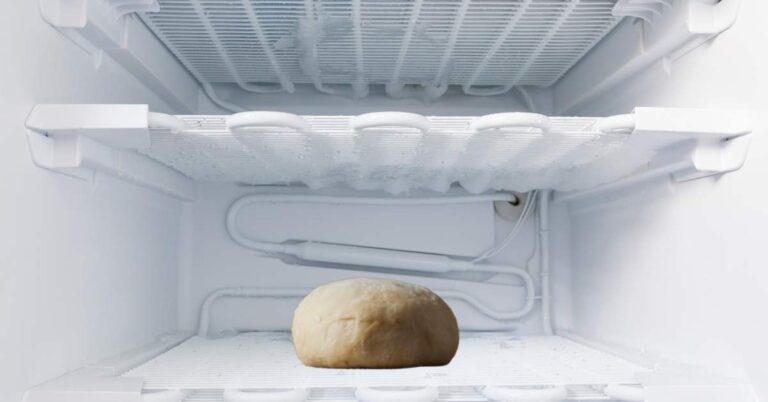How Long Can Pizza Dough Sit Out Safely? My Tips for Perfectly Proofed Dough and Avoiding Spoilage
Pizza dough is pretty simple—it’s basically just a mixture of water, flour, yeast, salt, and sometimes sugar and/or olive oil. There isn’t a huge risk of pizza dough going bad after just a few hours (or even a whole day), but you can very easily over-proof it if you let it sit out too long.
The key to understanding how long you can let pizza dough sit out is the relationship between yeast, sugar, and temperature and how each of these factors affect proofing times.
A pizza dough with 2-5 grams of yeast will overproof very quickly if left to sit out in a warm room for more than an hour or two. On the other hand, a pizza dough with 0.5-1 grams of yeast can safely sit out at room temperature for 6-7 hours without over-proofing or spoiling.
Generally speaking, a pizza dough with a relatively high amount of yeast (over 2 grams) should only be proofed for a short amount of time. Likewise, a pizza dough with a small amount of yeast (under 1 gram) will need a longer proofing time before it’s ready for baking.
Of course, these are just generalizations to help you get started. Let’s get into some specific scenarios so you can know exactly how long to let your dough sit out, and how you can tell if it’s over-proofed or gone bad.
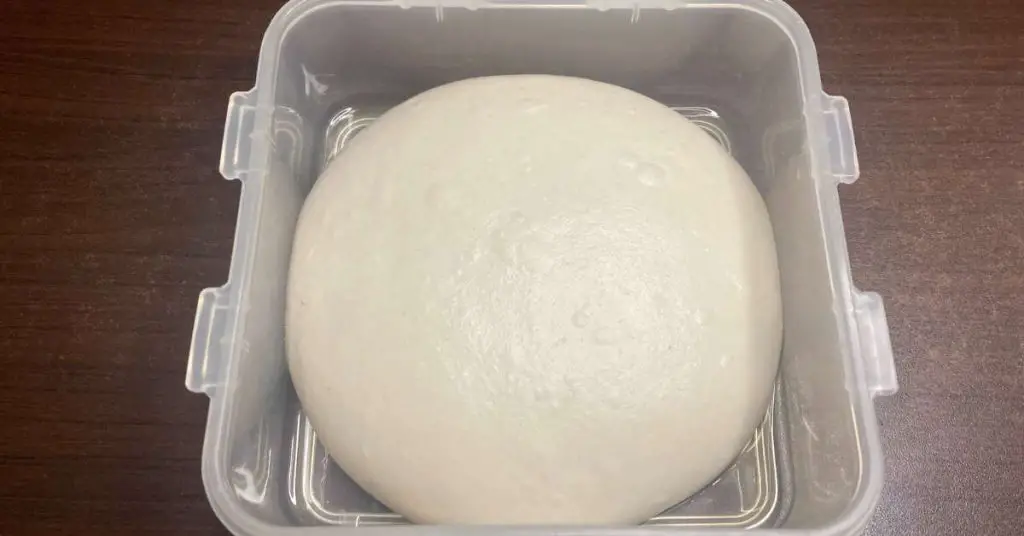
Note: If all this confuses you and you just want to know how to make pizza dough from scratch, check out my homemade pizza crust recipe with a full set of ingredients and instructions to follow.
How Sitting Out Affects Pizza Dough
If you’ve worked with any kind of dough before, you’ve likely heard of the concept of proofing and over-proofing.
Proofing is a normal thing in baking, and it basically refers to when you let your dough sit out for a certain period of time while the gluten relaxes and the yeast activates to puff the dough up with gas.
Proofing is normally a good thing because it improves the taste of the dough and helps the crust rise in the oven when you bake it. But when you leave the dough out too long, that’s called over-proofing.
Over-proofing is essentially when the yeast becomes overactive and blows out the dough, causing it to deflate and losing all the air and gas you worked so hard to build up. An over-proofed pizza dough will result in a dense crust that tastes strongly of yeast and has no texture.
Lean Dough vs Enriched Dough
A lean dough refers to any dough that simply contains flour, water, yeast, and salt. An enriched dough, on the other hand, contains other ingredients, like butter, milk, or eggs.
Generally speaking, enriched doughs are at a greater risk of spoiling and going bad because of these extra ingredients, so you need to be careful when proofing this kind of dough for too long (1-2 hours) in a warm environment.
An example of enriched doughs are hot cross buns and brioche, both of which have a rich, milky taste.
Does adding sugar and oil to pizza dough make it go bad more quickly?
Some people will claim that pizza dough that contains sugar and oil counts as enriched dough, but I disagree. In my opinion, honey/sugar and olive oil are normal ingredients for pizza dough and do not put it at greater risk of going bad as long as the environment is clean and the ambient temperature is relatively cool.
I’ve been making pizza dough with honey and olive oil for years and have never once had a batch of dough spoil because of it, even when left out for several hours. Sugar (or honey in my case) can really improve how your crust bakes, especially when using a home oven.
That said, I’ve over-proofed plenty of batches of pizza dough, which we’ll get into more detail about later.
How Yeast Amounts & Temperature Affect Dough Proofing
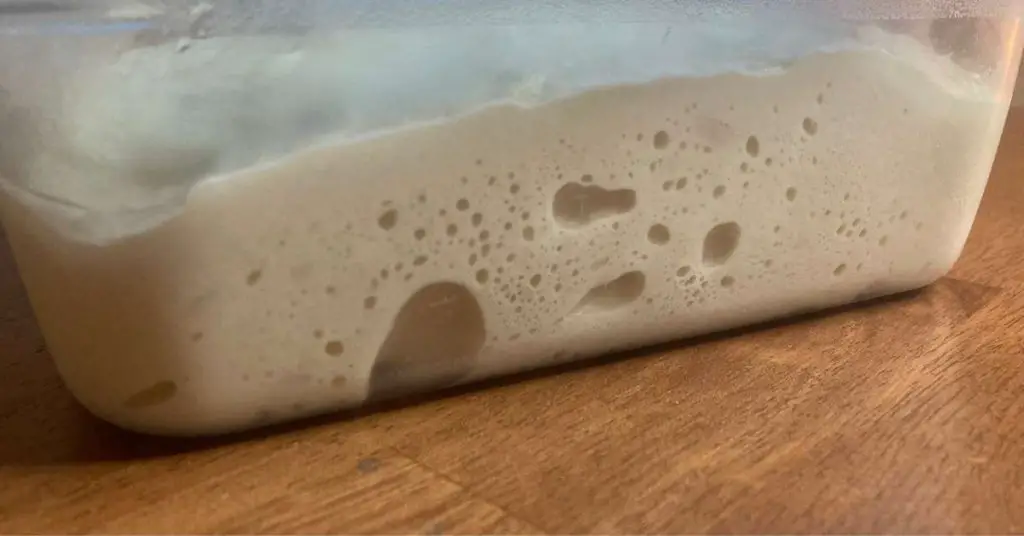
Whether you’re using an enriched dough or a regular pizza dough, the amount of yeast and ambient temperature of the room have a profound impact on how long you can leave it sitting out.
In general, the more yeast you use and the warmer the ambient air of your room the faster the dough will proof and eventually overproof. This is because there’s a direct connection between yeast activity and warmth.
| Amount of Yeast | Pros | Cons |
|---|---|---|
| More Yeast | Faster rise, strong yeast flavor | Risk of over-proofing, less flavor development |
| Less Yeast | More flavor development, less risk of over-proofing | Longer rise time, mild flavor |
Yeast thrives in a warm environment, and like any living organism, thriving means consuming more food and producing more waste. The food yeast eats is sugar, both from the starches in the flour as well as any extra sugar you add to the dough, while the waste is in the form of alcohols and gas.
This is essentially how a dough becomes over-proofed—the yeast consumes all the sugars in the dough and produces so much gas that it blows out and deflates the gluten bubbles. An over-proofed pizza dough will not taste good or rise properly when baked.
How I Avoid Over-Proofing Pizza Dough
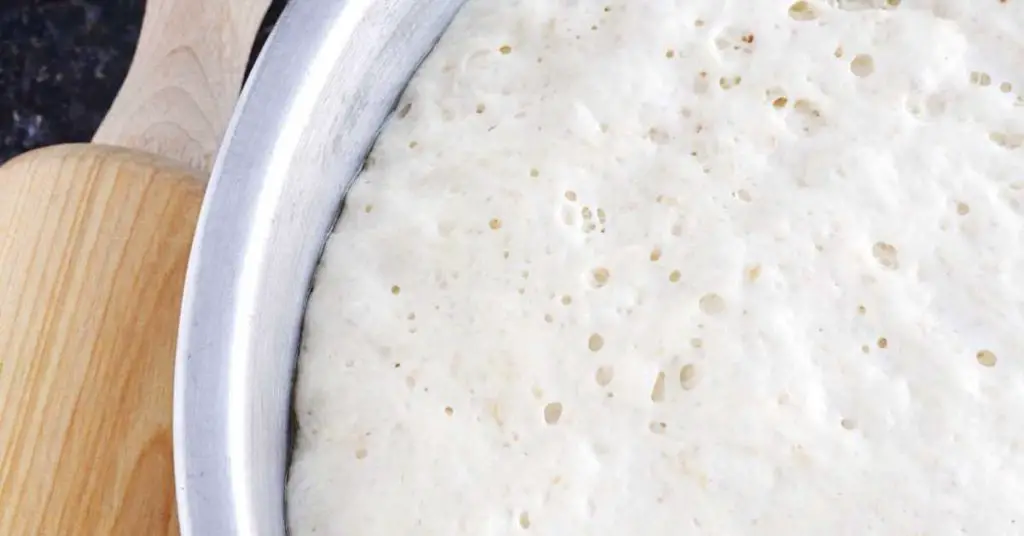
When I make pizza dough, I always let it sit out at room temperature for several hours and it never over-proofs or spoils. This is because I carefully manage the amount of yeast in the dough and the temperature of the room (unless I forget and leave it proofing too long).
For example, if I’m making a 500g batch of pizza dough (enough for about 2 pizzas), I’ll only add about 0.5 grams of yeast. This compares to the 5 grams of yeast (a full packet) that most pizza dough recipes call for.
When I use a minimal amount of yeast, I can easily let my dough sit out and proof for 5-6 hours (or more) without any issues. To help make this possible, I always proof my dough in a room that’s on the cooler side of room temperature—slightly below 20C/68F. If I find the dough isn’t proofing fast enough, I’ll move it to a slightly warmer spot in the house.
If you’re following a recipe that calls for a lot of yeast, be prepared to use it within an hour or so or it will quickly overproof.
Signs of Over-Proofed and Spoiled Dough
Knowing what to look out for will help you quickly identify pizza dough that’s been over-proofed or spoiled.
What over-proofed pizza dough looks like
Over-proofed pizza dough has two distinct looks depending on what stage of over-proofing it’s at. In my experience, an over-proofed pizza dough will look over-inflated like a balloon, or completely deflated.
This makes sense, because over-proofing is essentially a build up of gas in the dough that inflates it to the point where the gluten bubbles burst and deflate. So, the look of an over-proofed dough will vary depending on when you catch it.
In general, if your proofing dough is covered in huge bubbles, you probably over-proofed it. But if your pizza dough is completely deflated, you definitely over-proofed it.
A properly proofed dough ball will look relaxed with a shiny and smooth skin. It will also look noticeably puffier than when you first let it sit out. Of course, the exact look will vary depending on the type of pizza dough you’re making and how long you let it proof.
What spoiled dough looks like
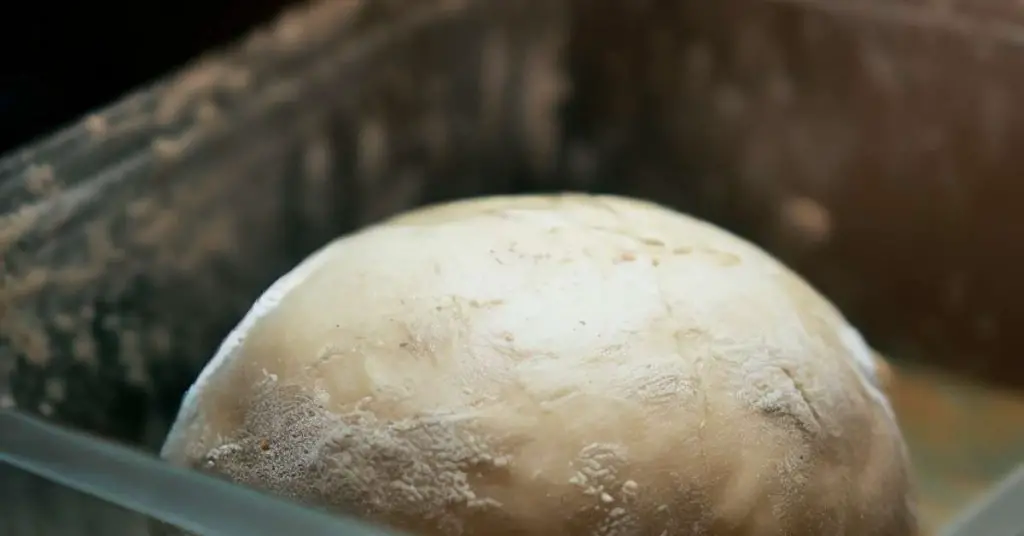
Pizza dough that’s spoiled or gone bad will be immediately recognizable to most people, both in terms of looks and smell.
Typically, pizza dough that’s gone bad will have visible signs of mold and smell bad, similar to what happens to most food when it’s spoiled. That said, if you smell an alcoholic odor, that could be a sign of over-proofing, but not necessary spoilage.
I have to say, in all my years of making pizza dough, I’ve never actually had one of my pizza doughs spoil or go bad. I can see this happening if you leave the dough sitting out at room temperature for days, or you live in an environment where mold thrives.
But for most people following a regular recipe, your dough will overproof long before it spoils.
Best Practices for Leaving Dough Out
If you’re planning to leave your dough out, here are a few best practices to follow.
Keep the dough covered at all times
This might not be obvious to some, but you need to keep your pizza dough completely covered at all times unless you’re actually prepping it or stretching it before baking.
Not only will an uncovered pizza dough have problems with over-proofing and spoiling, it will also dry out and become unusable. For this reason, I always keep dough in a covered mixing bowl, or in an air-tight proofing container.
A cooler room will prevent over-proofing
When proofing dough, the ambient temperature of the room is a key factor to keep in mind for all of the reasons we’ve already laid out.
This is why I recommend letting your pizza dough sit out at an ambient temperature right at or just below room temperature—around 20C/68F or lower. If the dough is proofing too slowly or quickly, you can always move it to a different spot with a higher or lower temperature, but try to keep it near room temperature for the best results.
It’s worth clarifying the numbers here because “room temperature” can vary substantially depending on the climate you live in. For those who live in a temperate climate like me, over-proofing is rarely an issue unless the heat is on.
But if you live in a hot climate, you may need to proof your pizza dough in a basement, or even in a closet, where it’s cooler than the rest of the house.
Let your pizza dough sit in the fridge before proofing
When you make pizza dough but don’t plan on using it until the next day, it’s always best to let it sit in the fridge. This significantly slows down the fermentation process and prevents over-proofing or spoiling. Pizza dough can be safely left in the fridge for several days without going bad.
When you let pizza dough sit in the fridge for several hours (or even days), this is called “cold-fermenting”, and there are lots of benefits to it.
For starters, cold-fermented pizza dough tastes better and generally has a better texture as well. This is because the yeast activity not only slows down in the fridge, it also changes the flavors of the byproducts that give fermented dough its unique taste.
Just remember that even cold-fermented pizza dough will still need to proof at room temperature for several hours before you can actually stretch it and bake it. This is because the gluten becomes too tight to stretch straight out of the fridge and it still needs to fill up with gas if you want it to rise in the oven.
Pizza Dough Be Left Out Overnight Safely
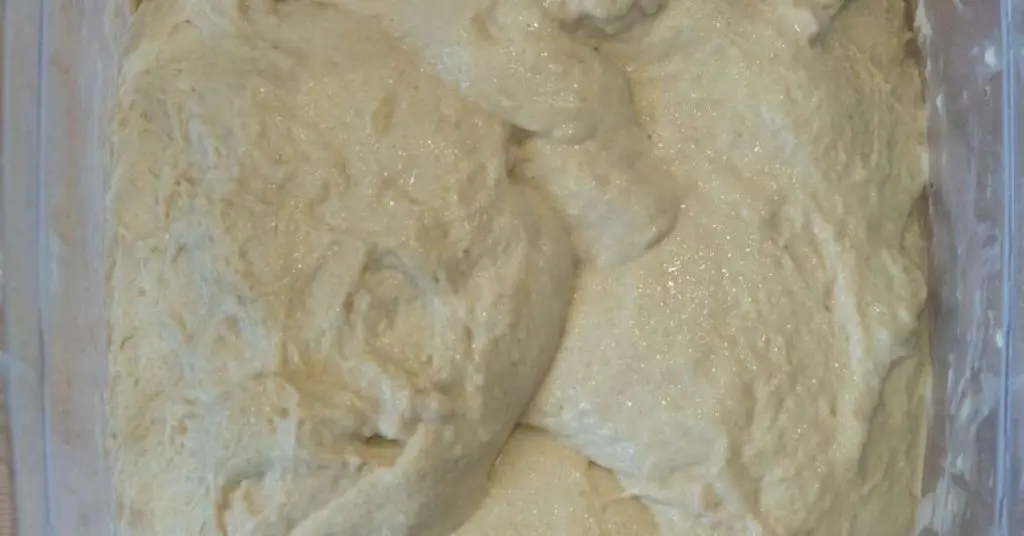
When making pizza dough, it’s common to let it rise overnight. I do this myself all the time when making no-knead pizza doughs where the process of autolysis creates the gluten network instead of kneading.
But in order to leave pizza dough out overnight without over-proofing, you’ll need to carefully manage the amount of yeast you’re using in the recipe.
In general, you only want to use a minimal amount of yeast during an overnight rise or you’ll find your pizza dough overflowing from its mixing bowl the next morning.
My favorite part about overnight pizza dough is that it doesn’t require any kneading to get a smooth and elastic texture. Kneading is easily the least fun part of making any kind of dough, so that’s a huge bonus for me.
Key facts from this article
If you don’t have time to read and digest this entire article, just keep the following bullet points in mind:
Pizza dough is a simple mixture of water, flour, yeast, salt, and sometimes sugar and/or olive oil. It can overproof if left out too long.
- The amount of yeast and ambient temperature affect how long pizza dough can sit out. Dough with 2-5 grams of yeast will overproof quickly in a warm room, while dough with 0.5-1 gram of yeast can sit out at room temperature for 6-7 hours.
- Proofing is when dough sits out, allowing the gluten to relax and the yeast to activate. Over-proofing occurs when yeast becomes overactive, deflating the dough and resulting in a dense crust that tastes like yeast.
- “Lean” dough contains only flour, water, yeast, and salt while “enriched” dough contains additional ingredients like butter, milk, or eggs. Enriched dough has a higher risk of spoiling than lean dough.
- More yeast and warmer temperatures speed up proofing and can lead to overproofing if you’re not careful.
- To avoid over-proofing, manage the amount of yeast in the dough and the temperature of the room. For a 500g batch of pizza dough, about 0.5 grams of yeast is what I recommend. If possible, proof your dough in a room at or slightly below 20C/68F.
- Over-proofed dough can look over-inflated or completely deflated depending on what stage of over-proofing it’s at. Spoiled dough will have visible signs of mold and smell bad—you’ll know it when you see it.
- Keep dough covered at all times to prevent over-proofing, spoiling, and drying out. Proof dough at or just below room temperature for best results.
- Pizza dough can be left in the fridge for several days without going bad. This process is known as “cold-fermenting”, and it slows down the fermentation process and prevents over-proofing or spoiling.
- Pizza dough can be left out overnight without over-proofing if a minimal amount of yeast is used and the temperature is relatively cool.
What happens if you leave pizza dough out too long?
When you leave pizza dough out too long, two things can happen: it can over-proof, and it can go bad. When it over-proofs, that means the yeast became overactive and consumed all the starches and sugars in the dough, affecting its taste and texture. When it goes bad, that means mold has taken over the dough and it’s no longer safe to eat.
Pizza dough will over-proof long before it goes bad or spoils.
How long does it take for pizza dough to go bad?
In general, a refrigerated pizza dough that’s completely sealed can last several days, if not weeks, before spoiling. At room temperatures, pizza dough will start to spoil after 1-2 days, or even quicker if you live in a warm climate where mold thrives.
In either case, keep in mind that pizza dough will over-proof and become unusable long before it becomes unsafe to eat, so eating moldy pizza dough isn’t really going to be a huge concern for most people.

